Category: Longform
You are viewing all posts from this category, beginning with the most recent.
The Gang's all here
The Gang’s all here
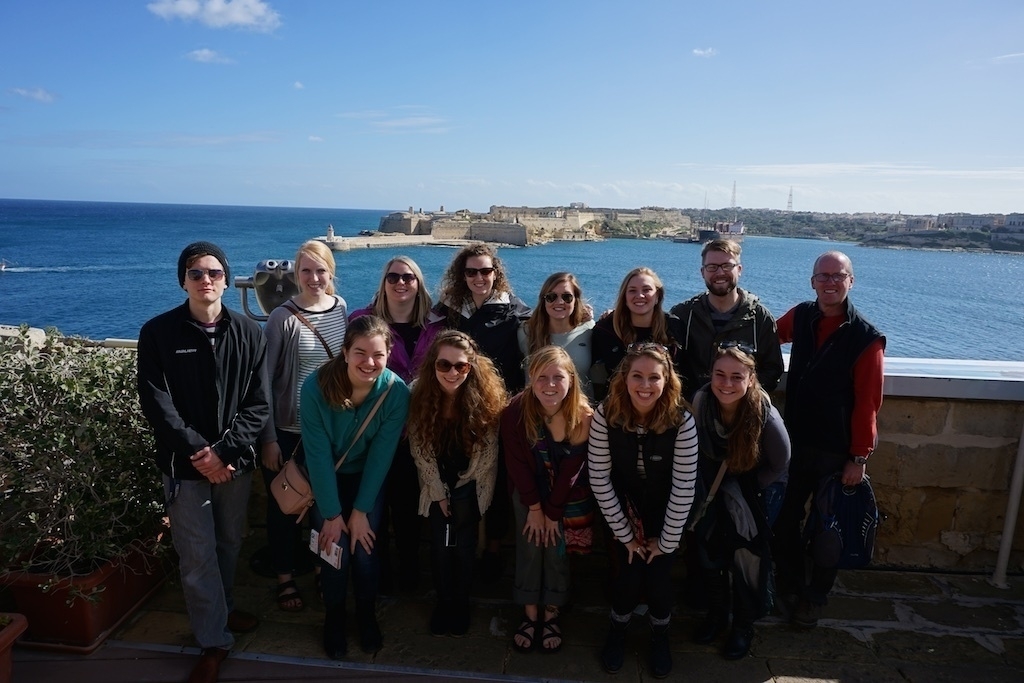
All of our students arrived safely by 11:00 last night. We got them up early this morning for a bit of sightseeing and wandering around Valletta. We all did The Malta Experience, which gave us an amazing overview of the history of this island dating back to 4000 BC. It is really incredible, Malta has been ruled by: Phoenicians, Carthaginians, Romans, Byzantine, Arab, Norman, Swabian, Aragonese, The Knights of St. John, French, and British! I’m sure I left out a few! A lot of it has to do with the fact that Malta is right on the trade route from the eastern to the western Mediterranean and beyond. I am really looking forward to our history class which starts this week.
In the meantime, we are enjoying the sunshine, and the Amazing views that are everywhere!

Advent, Anticipation, Adventure
Advent, Anticipation, Adventure
In the Christian church, Advent is a season of waiting, a season of anticipation. Normally, we are waiting and anticipating the celebration of the birth of Christ. Christmas! This year is no different, but it is a bit hard to not look just past Christmas at what awaits us in the new year. Adventure. I never thought about the fact that adventure begins with advent.
On January first, we will board a plane for Vietnam. We’ll spend three weeks in Vietnam, Cambodia and Thailand, and then head to our home for the Spring semester on the Island of Malta. We’ve been telling people that Vietnam is right on the way to Malta. On January 30th our 12 Luther students will join us and move in to one of the three flats in Sliema, just two blocks from this amazing view. I have to pinch myself just thinking that I’m going to be living on an island in the Mediterranean for five months.
<iframe src="https://www.flickr.com/photos/mescon/2961313246/in/photolist-bw3J3v-nsacXX-eAXeSV-4XByoU-buBStF-fncN4A-aCn8fQ-8wrBiN-EKVmG-iT5pHh-fBz4Fc-nQ2iiZ-5vFvfW-gMqXtR-YKcqC-byUzxg-d36rqy-dsqdqy-crnCLN-9temwv-h6rZ59-boPTbr-cAURjA-dY98S7-8AADhy-ggqjZE-oA6WGf-99cydS-4YnP48-75JNvi-5EvcEe-gV1E52-8eGQyt-croDhJ-nBwrx-efFrZL-e2yfuv-h1Ck19-nTFX35-dUzY6x-9rbJ3J-eP6age-dWP7U8-dsp1uB-npLMaz-brYnRf-iGDSm-9ts3nj-4WkiMT-eQhYLy/player/" width="500" height="246" frameborder="0" allowfullscreen webkitallowfullscreen mozallowfullscreen oallowfullscreen msallowfullscreen></iframe>
Our students begin classes February second. We will join in the fun, becoming students ourselves for the history of Malta class. But, after one short week of class we will take them to Rome for four days. At the end of March we will take them to Morocco for a week, and then the students will have another week to travel on their own. While they are off enjoying the wonders of Europe Jane and I will be biking through the Andalusia region of Spain. In May our adventure takes us to Istanbul for a long weekend. We are hoping to fit in a short trip to Sicily or maybe Tunisia.
The students leave after the first week of June, and then Jane and I will treat ourselves to a cruise beginning in Venice and through the greek isles. We will end in Istanbul, but quickly join up with a Luther alumni tour hosted by our friends for a few days in Prague. We may even see our old foreign exchange student Cenek! From Prague we fly home, exhausted, no doubt.
Here is a look at our preparatory piles as we begin to organize and pack for the big odyssey.
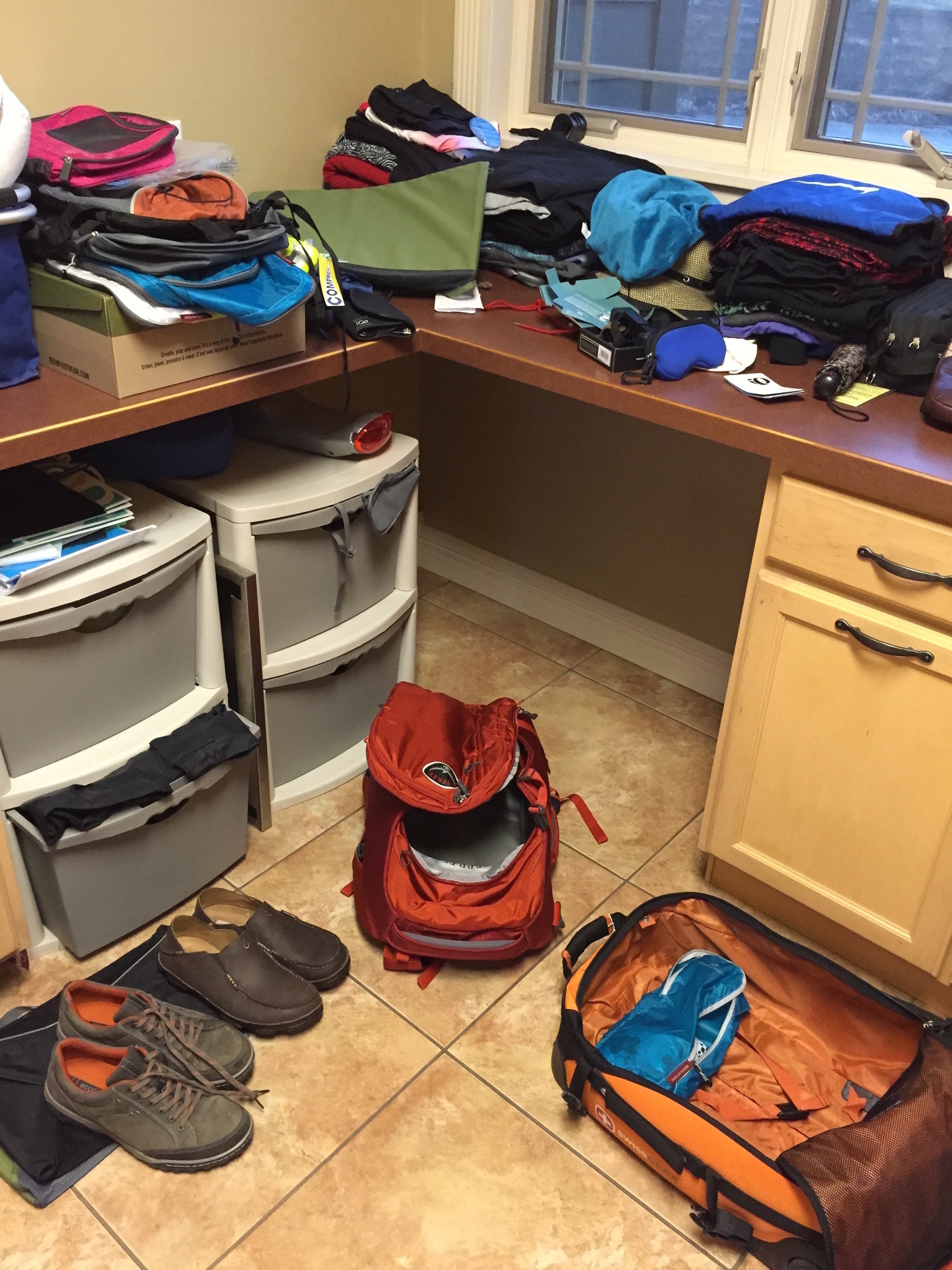
Christmas gifts are travel-related this year, versatile clothes, shoes, and camera gadgets, as we anticipate the experiences of the next six months. Most of them are going directly into the suitcase rather than under the tree. We are really looking forward to this opportunity to immerse ourselves in a new culture in a way that you cannot do by being a tourist for a few weeks. Watch this blog, as I will be writing about our journey here.
Many may say, ooh! you shouldn’t be writing about this people will read this and break in. Well, I can’t not document this incredible journey. And I have six words for the would-be breaker inners. Home Security, Web Cams, House Sitter. We are covered.
The Sous Vide Adventure Begins
When we were in Las Vegas last fall, I had the most delicious steak I’ve ever eaten. It was at Bobby Flay’s Mesa Grill. This blew me away. Although I love a good steak at a restaurant, usually I can do just as well at home. But this steak was amazing. This was a two inch think tenderloin that was perfectly medium rare from edge to edge! The very outside edge was seared perfectly too. Whoa, I thought at the time, how did they do that? How can you have a steak so uniformly done? The answer of course is Sous-vide.
Since then, I’ve been reading the books, like Modernist Cuisine at Home, and lots of articles on “Serious Eats”, I’ve seen it done on Chopped and Iron Chef. Then the other day I got a Kickstarter notice about the new Anova Precision Cooker. Its an immersion circulator that lets you do sous-vide cooking without one of the big fancy sous-vide appliances. This just clips on the edge of one of your big pots, and away you go. Alton Brown would love it. Unfortunately this new fancy one that even connects to your iPhone will not be available until later this year, so I decided to give the Nomiku a try. It was the highest rated of three options on Amazon, and was Prime Eligible. If I really like it I figure I can always upgrade to the Anova later. So here's my setup for an afternoon of high-tech cooking:

The idea behind sous-vide cooking is that you can cook at a lower temperature for a longer period of time. bringing the water and your food into equilibrium. Whats cool about that is that you can cook a steak to exactly 132 degrees, and you can leave it go for an extra hour or two and it will remain at the perfect medium rare done-ness. You can also cook chicken. without heating it to 165 degrees!
What!? I thought? this cannot be. But then I started to do some reading and once again science rocks. <www.seriouseats.com/2010/04/s…> It turns out that you can kill all the nasty bacteria at 135 degrees, it just takes longer! Like 90 minutes! Heating chicken to 165 kills the bacteria too, instantly. But it also gives you dry chicken.
One other aspect of sous vide is that you use a vacuum sealer to seal your food in plastic before you immerse it in the water. This allows you to season the food and add aromatics to your bag. Yum.
Of course this also precipitated a quick trip to the hardware store to get a FoodSaver vacuum sealer. Yay more kitchen toys.
Right now, I’m trying a steak. I sealed it up and dropped it in. In a couple of hours I’ll get out the cast iron skillet and heat it up good and hot, so that I can sear the meat when it comes out. A glass of Rombaur and a baked potato and I’m all set.
iowa startup accelerator
It has been an exciting day! I just got back from Cedar Rapids where I attended a mixer of mentors and teams at the Iowa Startup Accelerator. The accelerator officially launched yesterday with 10 new teams. There was some good local news coverage and lots of excitement by the teams. Some of them are from Iowa and one team is from as far away as Australia.
My role, as a mentor, will be to work with one or more teams over the next few months, giving them advice and feedback, and trying to connect them with the right people to help them grow their company. Over the next few weeks I’ll be spending some time meeting with each of the ten teams to get to know them better, and then we will see if there is a particular team that I can really help. I hope so, tonight was fun, and the enthusiasm is infectious.
Winter Skiing in the Spring
Winter Skiing in the Spring
Two days of skiing at Tahoe are in the bag, but what a difference between the two days. Yesterday we got the true spring skiing experience. It was cool and crusty in the morning and a bit slushy in the afternoon. Its been a pretty bad winter here in Tahoe so a lot of the runs were not accessible. In the morning we went up the Stagecoach express and turned left, to try the Stagecoach run. It was the worst skiing I have ever experienced in my life. Thankfully, we learned the trick. Stay on the groomed runs! Once we figured that out the day was a blast, if a bit repetitive. One thing you can’t beat is the views. Bright sunny day, clear blue sky, good friends to ski with. What could be better?
I also love this photo for all of the layers. High clouds, low clouds, shadows of clouds on the brown/green valley floor below.
Overnight, the winds kicked in, and the snow came down. Up to eight inches in the higher elevations. This made for a second day of mid-winter like skiing. Suddenly, all the runs that were not good yesterday were very ski-able with a fresh layer of snow. The only downside was that the winds and snow continued. We were told in the morning that all the lifts might have to shut down, at some point because thunder (and lightning) were in the forecast for the day. I’ve never thought about being up on a ski lift in a thunderstorm before but I’m pretty sure I wouldn’t want to be there.
In any case, if they do shut down certain of the lifts, then you are in trouble anyway...
Lake Tahoe
Lake Tahoe
A Rare Day
Lake Tahoe is beautiful. We arrived last night from Napa and got to our VRBO home, it is great and we had a beautiful view of the lake out our windows. The sun was just going down and I captured this picture of the Sequoia outside our window.
<a href="http://flic.kr/p/mouxs6" title="Camera Roll-482 by -bnmnetp-"><img src="http://farm3.staticflickr.com/2840/13381667205_c6d0cc90bf_z.jpg" width="478" height="640" alt="Camera Roll-482"></a>
Today we drove the east side of the lake and met Jim and Karen for lunch, then we went to Emerald bay in the afternoon after Pete and Kim joined us. Its really hard to describe or write too much about this, so I will just add a few photos here.
the word of the day is malolactic
Brought to You by the Letter ‘C’
I must confess, after all of the Chardonnay I’ve consumed, and I have consumed my share over the years, I have never really got the “buttery oaky Chardonnay” thing. Butter is just not something I’ve ever tasted in my Chardonnay, despite the fact that one of my all time favorites is Rombaur, which according to more than one person in Napa, is the “poster child” for buttery oaky Chardonnays. Really, who wants their Chardonnay to taste like butter? The whole describing wine thing is another thing I find really interesting. One of the tasting room hosts, recommended the movie Somm to us as we were chatting. I see you can get/rent it on iTunes, so I’m adding that to my list. Its about a group of guys preparing for the master sommelier exam, which may sound a bit dull, but the reviews for it are fantastic.
But after two days of tastings in Napa its all clear to me now. The key that helped me understand the difference, and I’m confident I’m now an expert, is Malolactic Fermentation. The science of it all, unsurprisingly, has stuck in my brain. Here’s a quick summary of more than you ever probably wanted to know.
Malolactic Fermentation is the process of converting Malic Acid (which tastes tart,and citrussy to my mouth) to Lactic Acid which is a much more mellow flavor. Malolactic fermentation occurs after fermentation and is the result of injecting a particular bacteria into the process.
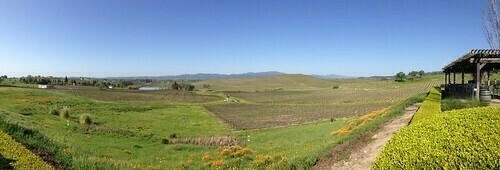
Now, to each his own, but I can say that I am a fan of Malolactic Fermentation. Here are some of my favorites:
-
Rombaur
-
William Hill
-
Carpe Deim
-
Poseidon’s Vineyard
Conquering the Tannins
I’ve never been able to drink red wine much due to my allergies. What am I allergic to in red wine? Tannin is a chemical that comes from the skins, seeds, and stems of the wine. They are much more prevalent in red wine than in white. Now according to our host at Chateau Montelena (see also the movie Bottle Shock) I need to develop a resistance to Tannins in order to drink red wine. The way to do this, according to this would be allergist, is to begin with Pinot Noir, and work my way up from there. Well it sounds like a project, and I do enjoy a nice glass of Pinot. So, something to work on. All in the name of self improvement of course.
easy publishing with runestone interactive
During my January travels, I also converted this blog from tubmlr, which had been frustrating me for a while, to Octopress, with which I have been very happy. Nothing like hacker level control of your own blog. But more, than just the switch in tools, the move to Octopress inspired me to make it easier for people to publish small or large works using the Runestone tools.
Yesterday, at the Learning @ Scale conference we demoed this new capability. See [the demo here](<http://runestoneinteractive.org/LearningAtScale). To make it super easy to publish:
-
Lecture slides
-
Demonstrations
-
A Tutorial
-
Lab Instructions
-
In class exercises
-
A short module on your favorite topic not covered elsewhere
-
An entire book
Building
You can simply follow the instructions at this new repository: github.com/RunestoneInteractive/RunestoneTools. In a nutshell:
-
Install Sphinx, paver, and paverutils using pip.
-
Clone the repository
-
Edit the index.rst file in source, and add any additional rst files you may want, depending on how complex your project is.
-
run
paver build
Deploying
Now you have a choice. In the build directory you have a nice self contained set of html files, these files are set up to make use of the runestone server invisibly in the background. The static html can be served from any web server. Just drop in the build directory and you are ready to serve. OR, you can now host and deploy your project using GitHub Pages. To host on github pages you need to do three things.
-
Create an empty repository in your github account.
-
run
paver setup_github_pagesand paste in the URL of the new account. -
run paver deploy
Now your pages will be available at: http://youraccount.github.io/YourRepo
If you want to host these pages behind a custom domain name, you can follow the instructions on github for doing so. Hint: Its really easy.
I hope this new capability will inspire lots of people to give these tools a try. I also hope that we can build a repository of resources built with the tools, so that we can all share our teaching ideas. Stay tuned for more on that.
Caveats
All of the features, activecode, codelens, assessment questions, parson’s problems, and more work just fine. The major thing that will not work (yet!) is the login/logout. I need to rework our authentication system in order for this to work. This will for sure need to happen before the end of summer.
reflections on january 2014
I left home on December 27 2013. When I left I had 3 bags packed. One for our trip to Mazatlan to celebrate the new year with our friends the Vermace’s. One for my January term class on the west coast, and finally a bag full of ski gear for the rest and relaxation trip to Breckenridge. Since leaving home I have travelled a bit over 10,000 miles. My means of travel has included several flights, two long train trips on Amtrak, some time in a car, and lots of time on public transportation.
In the last 35 days I’ve had more experiences than many people would have in a lifetime. I say this out of a sense of gratitude, and to remind myself how lucky I am.
- I’ve body surfed in the Pacific Ocean on the beach in front of our rented house in Mazatlan called the Sand Castle. Calling the Sand Castle a house is a bit of an understatement.


-
I’ve been deep sea fishing, and reeled in a large Dorado (Mahi Mahi), which was cleaned dockside, and prepared on the grill at the Sand Castle just hours later.
-
I’ve toasted the New Year watching fireworks over the beach from the fourth floor of the Sand Castle.

-
I’ve gotten to know a group of 11 Luther Students well, and watched as they talked with and learned from some of the most successful entrepreneurs in the country.
-
I’ve had four days in Seattle to visit Pike Place Market, eat seafood, visit Pioneer Square. During the same period we visited Amazon, Microsoft, VMWare, and Percognate.

-
The Amtrak from Seattle to San Francisco promised spectacular views and a comfortable ride. While the ride was comfortable, if I did it again, I would definitely spring for sleeper cars for the group.
-
I’ve had four days on Fisherman’s Wharf, led a bike ride across the Golden Gate Bridge, and beyond Suasalito. While in San Francisco we visited Strava, Pinterest, Moovweb, Bizo, Sqwiggle, Schwartz MSL, and Hummer Winblad.


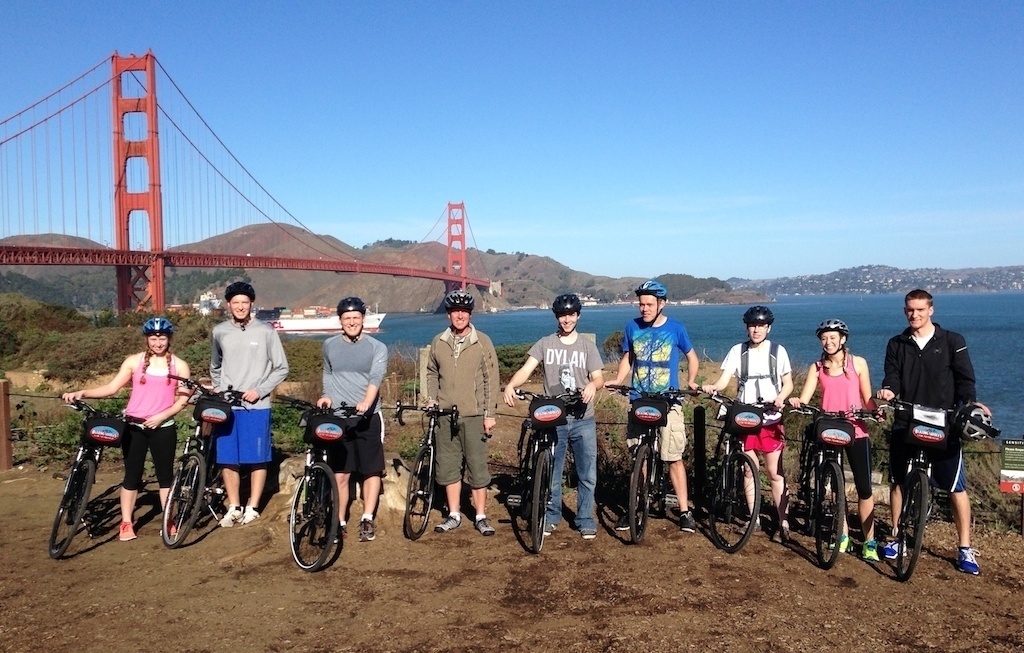


- I’ve had four days in Menlo Park, including a 32 mile bike ride up Old La Honda road and along Skyline drive. I introduced the group to turkish food at Sultana restaurant. While in Menlo Park we spent a day at Google, a morning at SportVision, and learned about patent law at Fenwick West.
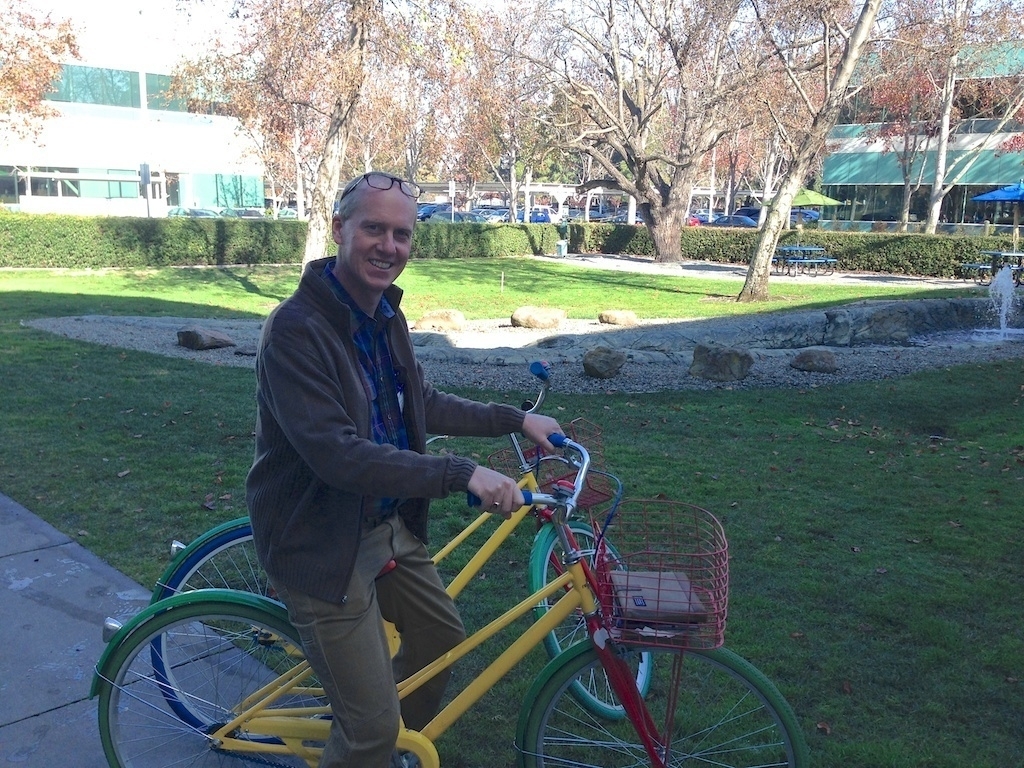





- The train ride from San Jose to Los Angeles lived up to its billing. The views were spectacular, and we got to see an amazing sunset over the Pacific.

-
To cap off our trip we stayed in a house called Beethoven’s Trio in Santa Monica. Rather than eating out we were able to use the grill and the kitchen and prepare our own communal meals. It was fun to watch the students cook (and clean up) and eat in a very casual setting.
-
We got to spend the weekend exploring Venice Beach and anything else in the LA area. Sunday morning I met a group of Chelsea fans at a local British pub. A fun way to get my soccer fix for the week.
-
While in Santa Monica we visited with Capsule, Coloft, and Fullscreen. At Fullscreen we were hosted by three Luther alumni two of whom took the Entrepreneurship course and did the journey three four years ago. It is so gratifying to see your students succeed.


- Finally I’ve been able to spend six days “recuperating” in Breckenridge. Some might say that five days of skiing is hardly recuperating, and I would agree. However, we have had 30+ inches of fresh snow in the last three days, and the locals say this is one of the greatest storms ever. So to say that the skiing has been fantastic is a bit of an understatement.



After all of this, perhaps the best thing is that I get to go home tomorrow.
on 14 inches of powder
The weather report said we had 6 inches of snow overnight. From the moment we walked out the door it was clear that they had underestimated the snowfall by about 8 inches.

We were on the third chair up at 8:30 this morning. The steep parts of the hill were awesome, with powder over my knees, floating through the snow. On the gentle parts of the hill we all formed a single file line in order to get through it all.
By mid-day it was work. The powder had been packed in many places and it was work to get through it. The snow continued heavily throughout the day, and we are supposed to get another 14 inches overnight.
This has been the perfect few days of rest and relaxation to finish off January term. Its even better because we bought the Epic local passes this year, which means we don’t feel like we have to ski full time, but can actually just ski until we are ready to take a break, and then ski again later. Its been great.